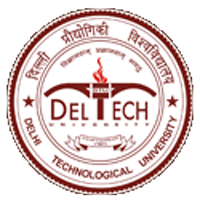Please use this identifier to cite or link to this item:
http://dspace.dtu.ac.in:8080/jspui/handle/repository/22255| Title: | INVESTIGATION OF THERMOPHYSICAL ASPECTS OF INFRARED DETECTOR CRYO CHAMBER WITH CRYOCOOLING |
| Authors: | SINGHAL, MAYANK |
| Keywords: | THERMOPHYSICAL ASPECTS CRYOCOOLING INFRARED DETECTOR CRYO CHAMBER JOULE THOMSON CRYOCOOLER |
| Issue Date: | Jul-2025 |
| Series/Report no.: | TD-8230; |
| Abstract: | The present investigation represents a comprehensive analysis of the thermal conditions and phenomena for optimal operational efficiency of infrared (IR) detectors having multiple tactical and civilian applications. An extensive qualitative evaluation of the design considerations linked to the construction of an infrared cryochamber often referred to as a Dewar, that accommodates IR devices has been undertaken. This investigative analysis encompasses a broad spectrum of factors, including the mechanical design elements vital for ensuring structural integrity, the crucial necessity for upholding vacuum integrity to significantly reduce thermal conduction, as well as a thorough examination of the crycooling technologies that are indispensable for achieving the requisite operational cryogenic temperatures. Furthermore, a comprehensive finite volume analysis has been conducted to promote a more profound understanding of the thermal phenomena within the cryochamber such as the conduction heat transfer that occurs through an inner dewar, alongside the gaseous conduction mechanisms that arise because of outgassing phenomena, and complexities involved due to radiative heat transfer processes. Given that conventional analytical methodologies utilize an error function, widely acknowledged for being computationally intensive and resource-demanding, a more generalized numerical model has been adopted for both steady-state and transient thermal analyses. To ensure that the thermal modelling of the infrared cryochamber undertaken for steady- state and transient conditions is sufficiently reliable and accurate in its predictive capabilities, a comprehensive assessment was conducted for both the grid convergence and the independence of time steps utilized in the simulations, A comprehensive theoretical and thermophysical investigation of miniature Joule- Thomson (JT) and Stirling cryocoolers has also been conducted to elucidate design considerations and evaluate the influence of specified parameters on the operational efficacy and performance of both coolers. Joule Thomson cryocooler and Stirling cryocooler have been successfully realized as per targeted specifications. v Separate experimental setups were developed for testing cryochambers with JT cooler and Stirling cryocoolers. Results obtained from theoretical analysis and modeling exercise have undergone a rigorous validation process through experimental investigations conducted on developed test setups, to establish the efficacy and reliability of the proposed thermal models. In the case of the glass cryochamber and JT cooler assembly, the experimental values for cooldown duration in the device OFF’ mode, is approximately 98 seconds in comparison to the predicted simulation value of 94 seconds at 300 K. The experimental cooldown duration for the same glass cryochamber assembly in the ‘device OFF’ mode at 328 K is approximately 116 seconds against the predicted simulation value of 114 seconds. For the same assembly functioning in ‘device ON’ mode, the experimental cooldown duration increases to 109 seconds against the predicted simulation value of 105 seconds at 300 K. The cooldown duration is 118 seconds against the predicted simulation value of 116 seconds at 328 K. In the case of rapid cooldown metallic (Inconel) cryochamber, the experimental results for cooldown duration in ‘device OFF’ mode, is approximately 10 seconds against the predicted simulation value of 9 seconds when the temperature is 300 K and the value in ‘device OFF’ mode at 328 K is approximately 11 seconds matching with the simulated value of 11 seconds. In ‘device ON’ mode, the experimental value of cooldown duration for the same assembly is 12 seconds and matches the predicted value of 12 seconds at 300 K while the cooldown duration is 14 seconds against the predicted simulation value of 13 seconds at 328 K. Consequently, the numerical analysis accurately predicts the duration required for the cooldown process, as evidenced by an empirically observed maximum deviation of approximately 4.2% when applied to the case of glass cryochamber, while exhibiting a significantly lower error of 1% in the context of the rapid cooldown metallic cryochamber. The thermal model enables the prediction of transient cooling performance of the cryochamber under various conditions viz., ‘device OFF’ and ‘device ON’ conditions, variation in ambient temperature, variation in cryochamber vacuum, and for varying materials and dimensional configurations with differing material and transport properties. |
| URI: | http://dspace.dtu.ac.in:8080/jspui/handle/repository/22255 |
| Appears in Collections: | Ph.D. Mechanical Engineering |
Files in This Item:
| File | Description | Size | Format | |
|---|---|---|---|---|
| MAYANK SINGHAL Ph.D..pdf | 5.54 MB | Adobe PDF | View/Open |
Items in DSpace are protected by copyright, with all rights reserved, unless otherwise indicated.



